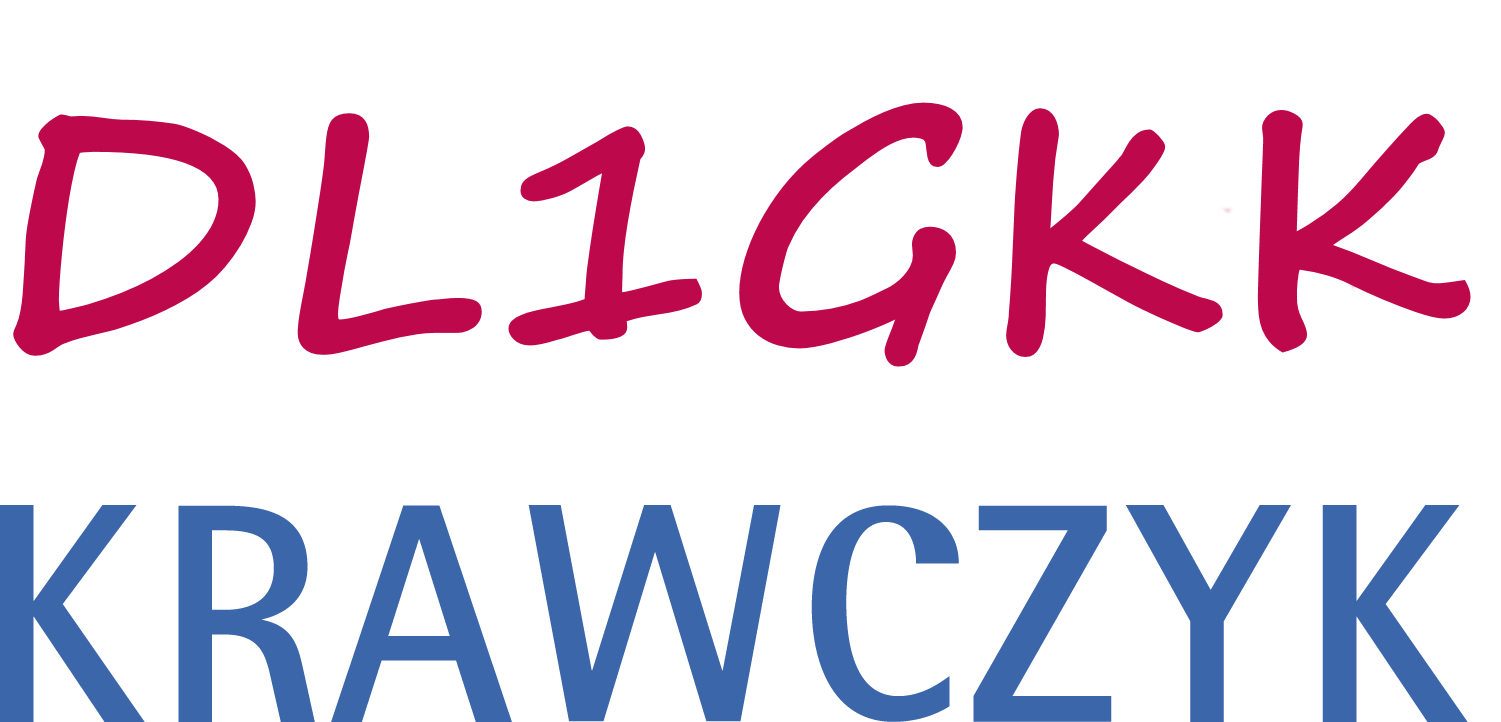I have always liked to build my amateur radio equipment and computers as compact as possible and to connect them with as few cables as possible. Clean could be my middle name 😉 This is probably also the reason why I always like to put everything into a case, i.e., a GO-BOX. Grab and go is my motto.
My first GO-BOX
In 1990, it was a photo case with a Commodore 64, a floppy drive and black and white TV. With it I could already do Packet Radio, RTTY and Amtor. Unfortunately I have no more photos from that time.
My second GO-BOX
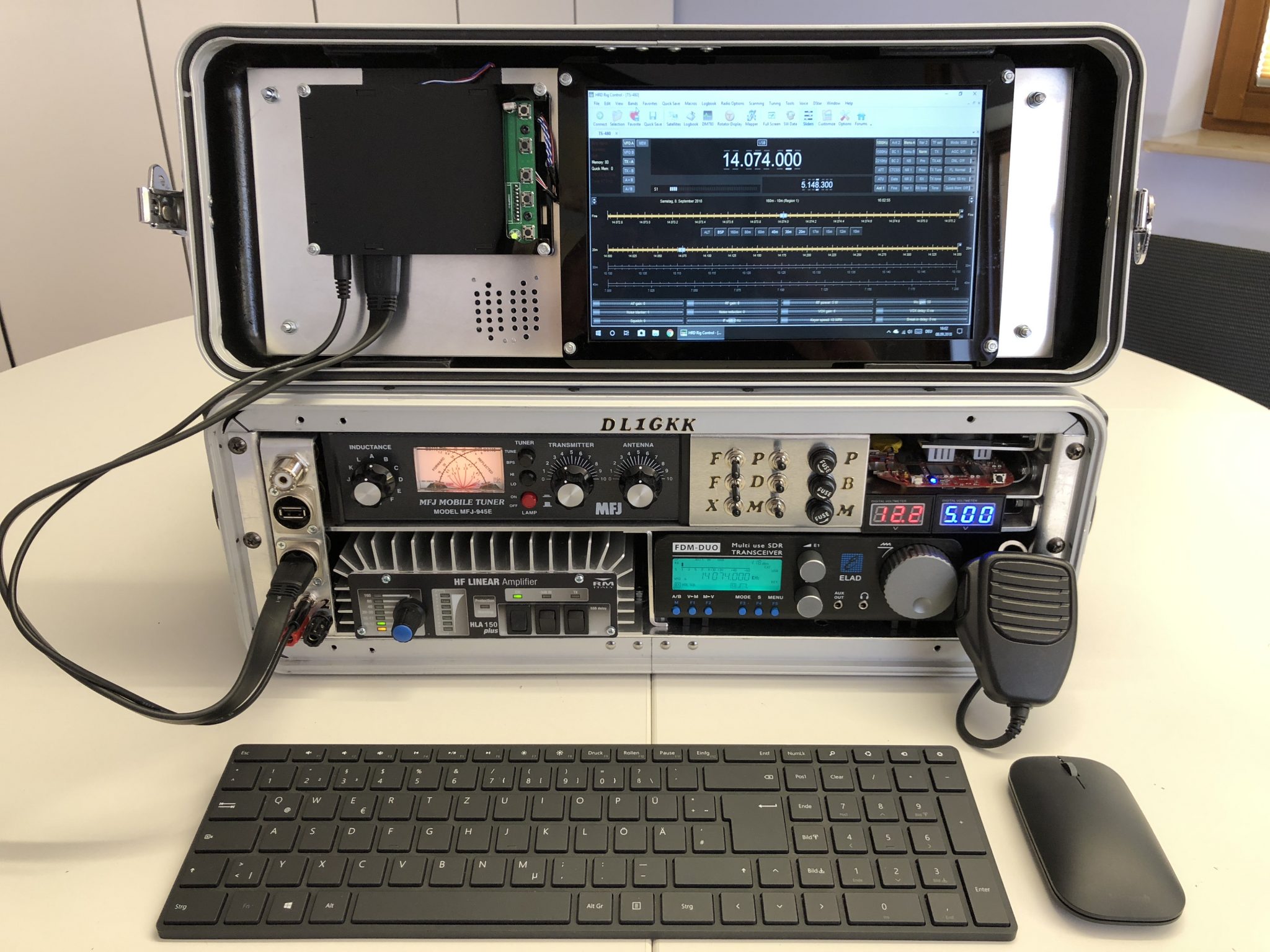
In 2017, I then wanted to do right and install the best possible technology at the time. I use an ELAD SDR FMD-DUO for HF, a HLA 150W power amplifier, a MFJ antenna matching unit and a Windows Mini PC as my radio. A great GO-BOX but very heavy not least because of the built in lead acid battery. This box is only used stationary. More information: https://dl1gkk.com/portable-amateur-radio-station/
Small digital amateur radio station
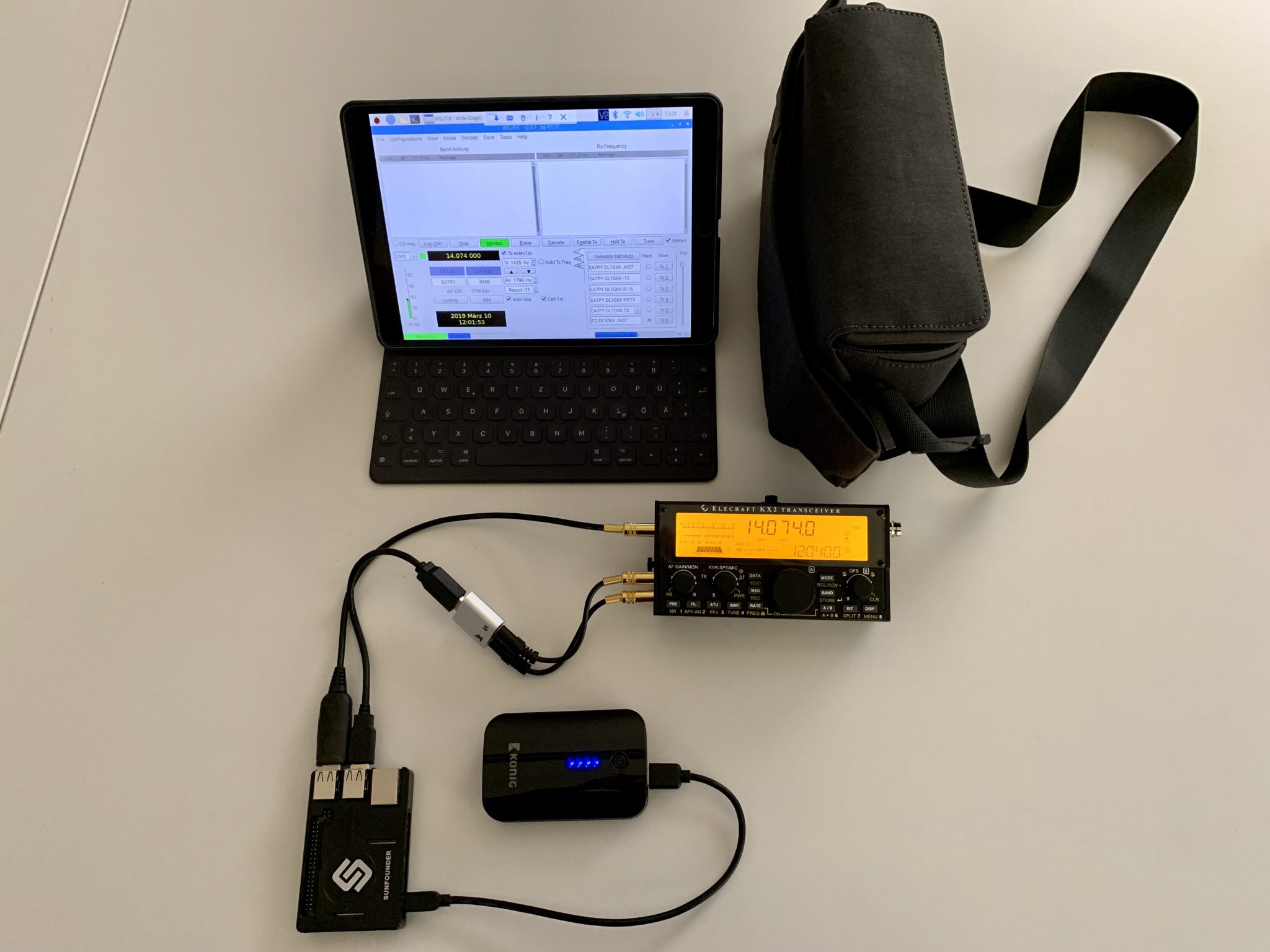
This time no GO-BOX. In 2019 I acquired a KX2. A wonderful little radio, unfortunately without VHF and UHF. At the same time, my interest in using the Raspberry PI as an amateur radio computer began to grow. Instead of a computer and keyboard I used an iPad to control the Raspberry via VNC. A very simple setup that was a lot of fun. More information: https://dl1gkk.com/small-portable-digital-amateur-radio-station/
Small digital amateur radio station V2
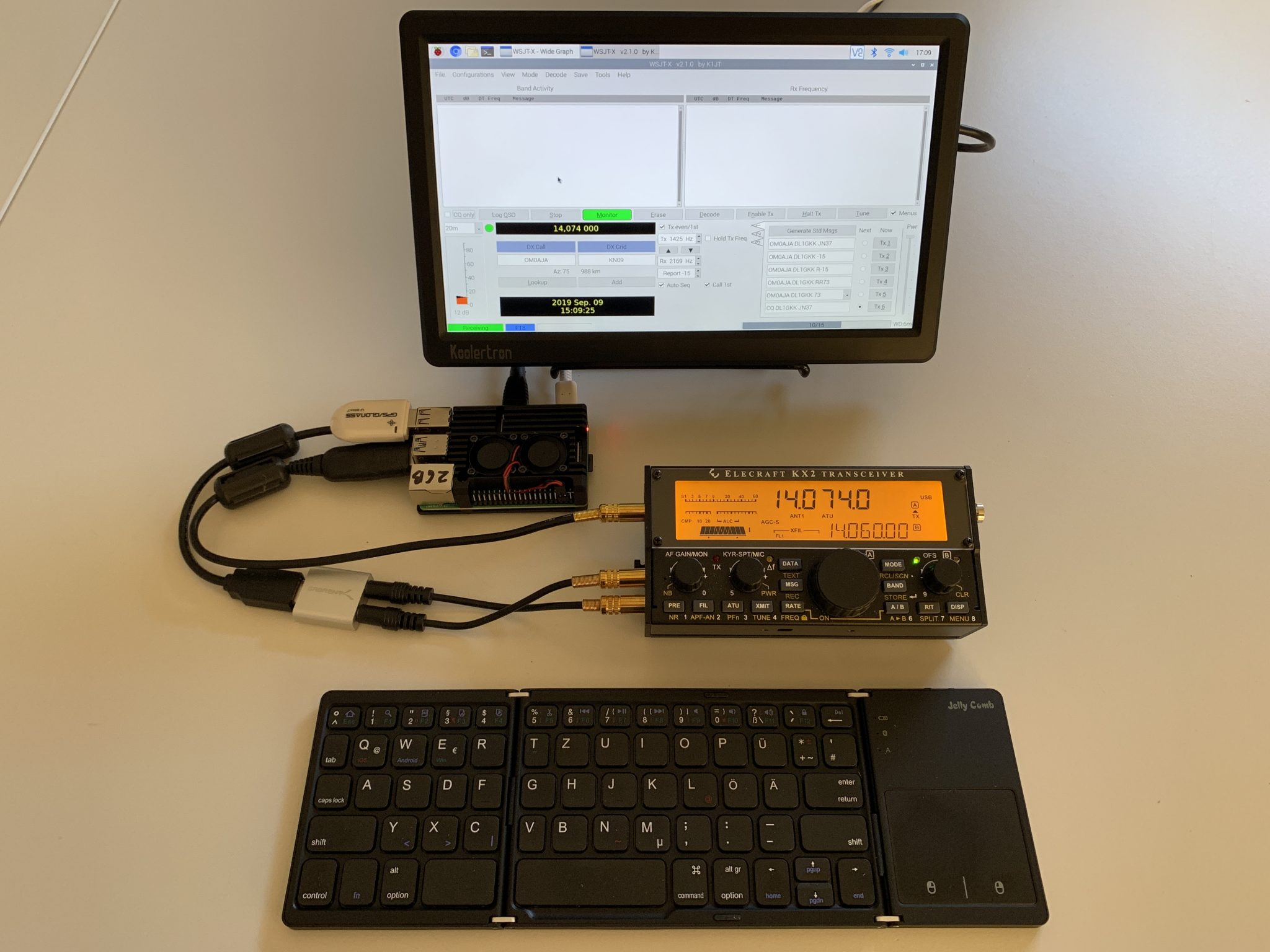
The alternative to controlling with an iPad. A 12V monitor and a Bluetooth keyboard with touch pad. More information: https://dl1gkk.com/small-portable-digital-amateur-radio-station-v2/
My third GO-BOX
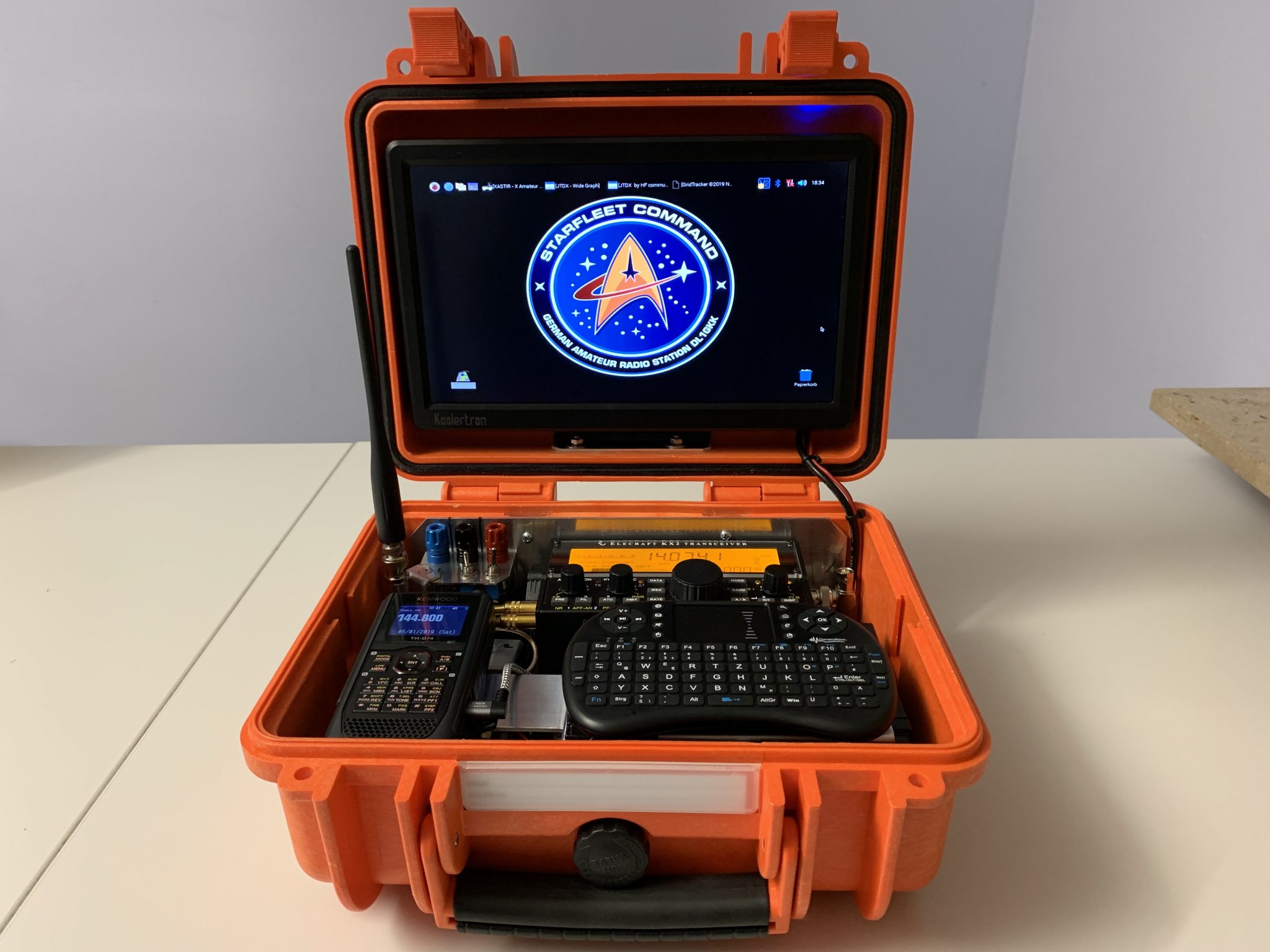
There it was again, my desire to fit everything into one case. A Raspberry PI4, a KX2 for HF, a TH-D74 for VHF and UHF with built-in TNC, a monitor, a lead battery, so to speak the Egg-Laying Wooly Pig 😉 With my second and third GO-BOX I made very good experiences with ALU sheets, which I formed myself to edge parts and use for the assembly of the devices. This has the advantage that everything can be firmly mounted, all devices have a uniform mass and the sheets can also absorb and release heat from the devices. Together with ferrite cores over the connecting cables everything is very high frequency fixed. More information: https://dl1gkk.com/small-qrp-go-box-powered-by-raspberry-pi4-kx2-and-th-d74/
UPDATE 2022
Since I needed my TH-D74 as a portable and for my car I replaced it with a YEASU FT-70D with a Mobilinkd TNC.
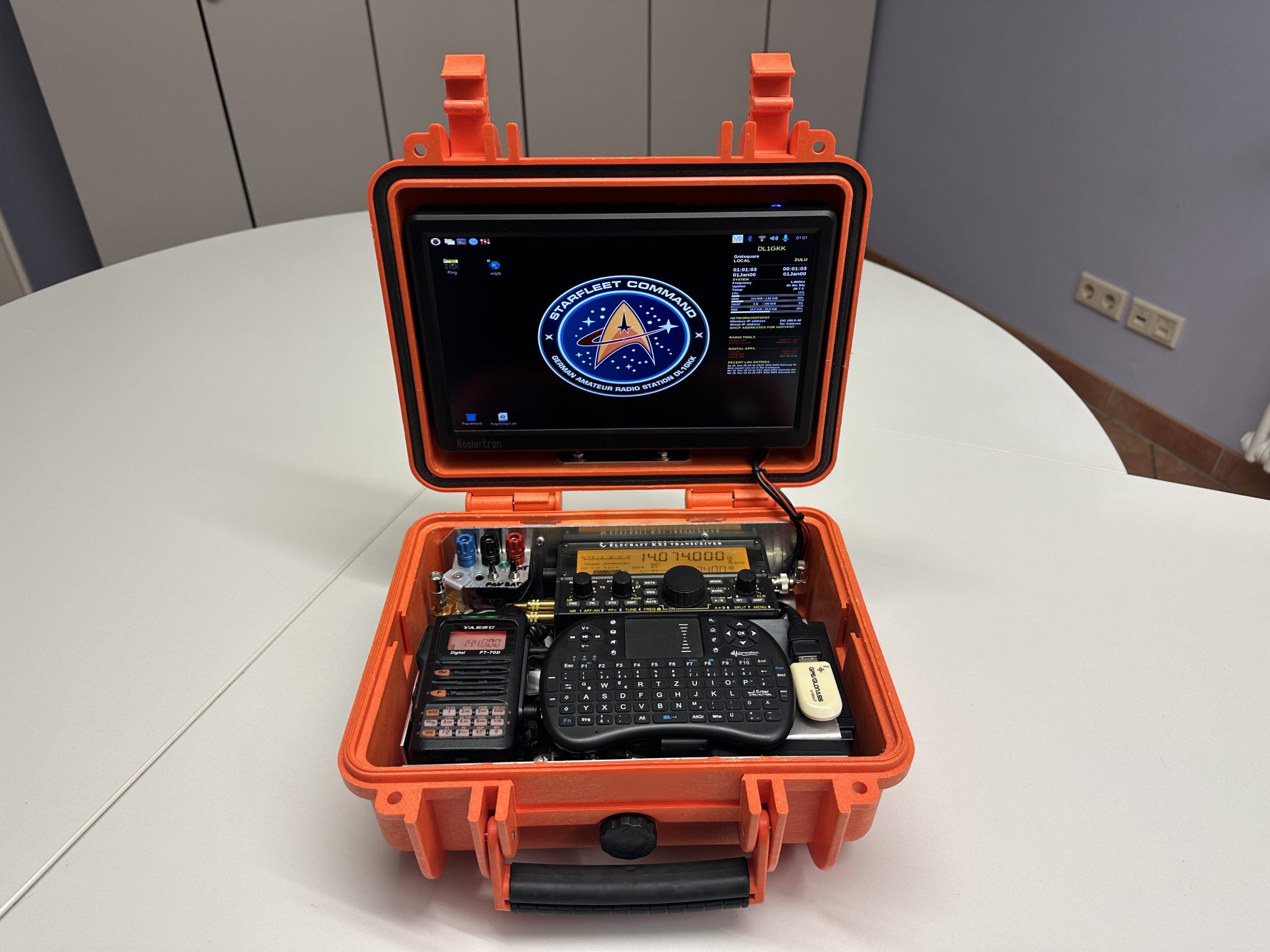
The cordless amateur radio station

With the availability of the new ICOM IC-705 radio in 2020, it quickly became clear, everything is now going cordless. Immediately, Clarke’s Law came to mind, “Any sufficiently advanced technology is indistinguishable from magic.” Impressive the new possibilities. Read more: https://dl1gkk.com/ic-705-completely-cordless-digital-ham-radio/
The Tripod Box

Not really a GO-BOX. I use a tripod for my Alex loop for HF and a LogPeriodic antenna for VHF and UHF. Then in 2020 I had the idea to also attach radio, computer and monitor to it. Currently my favorite setup for QRP operation. More information: https://dl1gkk.com/tripod-box-the-slightly-different-gobox/
The Raspberry Pi4 USB-C Gadget
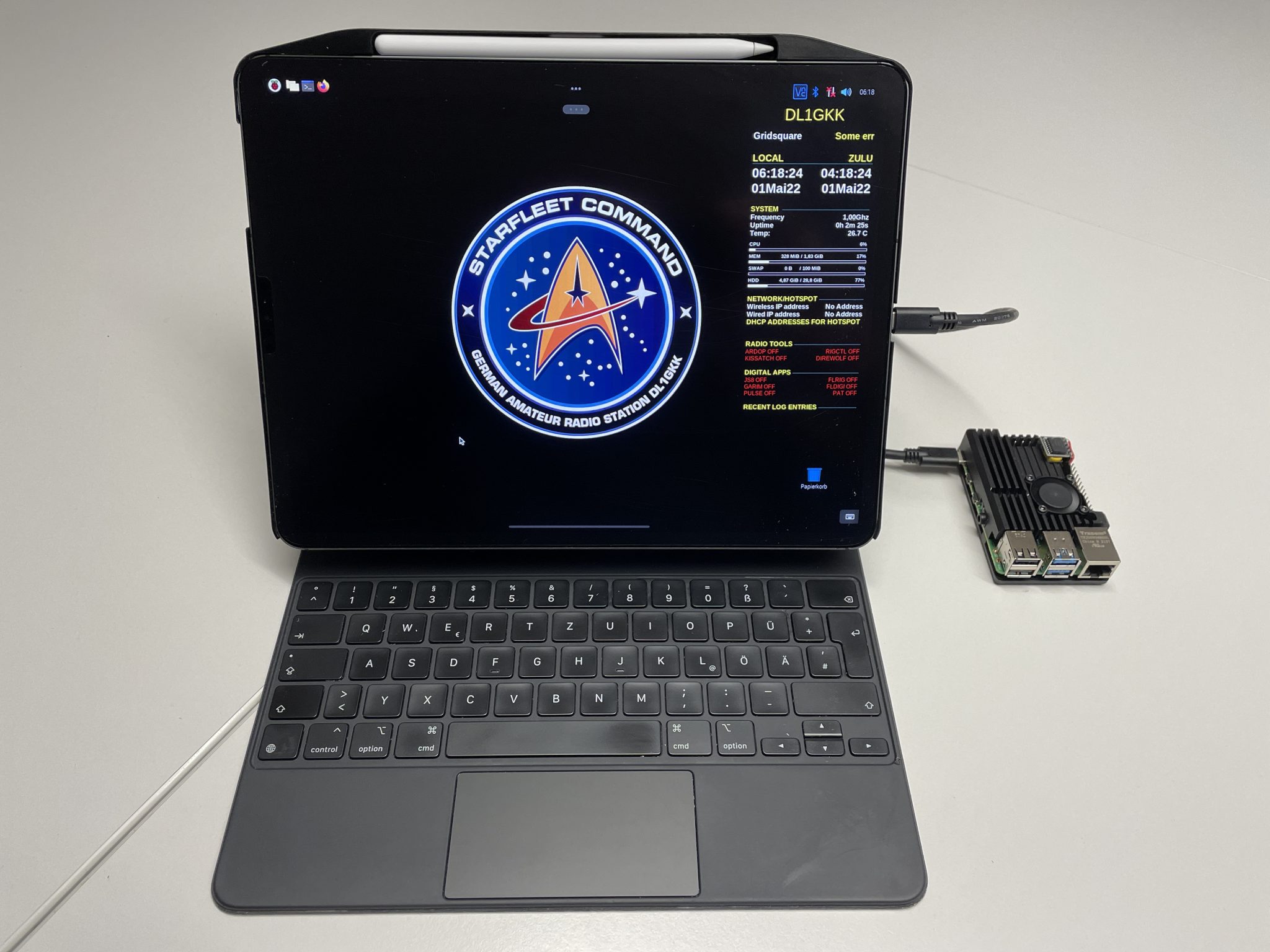
You can also connect the Raspberry Pi4 directly to the USB-C port of the iPad Pro. This way it is powered by the iPad and also the data transfer (network / VNC) is possible with only one cable.
https://dl1gkk.com/plug-and-play-ham-radio-with-ipad-pro-and-raspberry-pi4/
My fourth GO-BOX 2023

A powerful communication device with ICOM IC-705 and a windows 11 mini pc.
https://dl1gkk.com/qrp-gobox-2023-with-icon-705-and-windows-11-pc/
My Shack 2023

Thanks to the technology used by me also my shack looks accordingly tidy.
The Software
Listing the software, I use for the Raspberry PI is beyond the scope of this article. More information: https://dl1gkk.com/setup-raspberry-pi-for-ham-radio/
Stay healthy and have fun.
Karl-Heinz Krawczyk, DL1GKK
